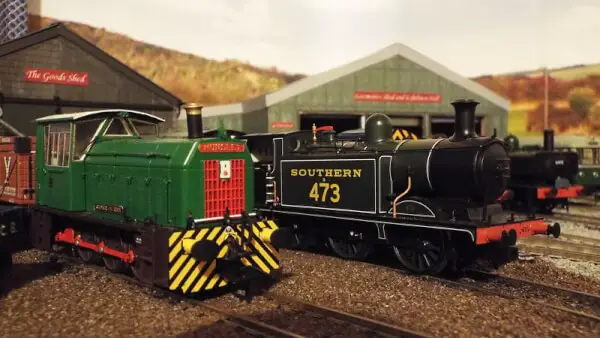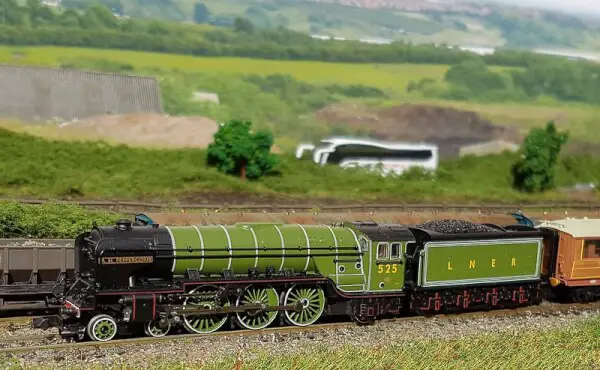If you want to get into model trains, one of the most important things to keep in mind is the scale that you want to go for.
There’s often some debate about whether you should get into N scale vs Z scale; Both the N scale model trains and Z scale trains are great options, each one of them coming with its own pros and cons. The great thing about these scales is that they are both very easy to adapt and adjust to your own needs, and the quality for both is great!
The biggest factor is the thing like size and space you need might to have a decent set up may push you towards one or the other. These are both on the smaller end of the spectrum so if you want something way bigger, or you’ve got a whole room to dedicate to the construction of a model train layout, maybe look at O scale or HO scale instead.
But, it’s still a great approach to be had and the results can be great!
So let’s take a quick look at Z scale vs N scale and which one you should pick!
What is the difference between N scale vs Z scale?
The N scale is a very common type of model railway scale.
Based on the country, the scale can be anywhere from 1:148 to 1:160.
The gauge (which is the space between each rail) is 9 mm. While the spacing is always the same, you can have a different rail height.
This scale is common for a lot of people because it makes it easy for hobbyists to create layouts that don’t require a lot of space.
The O Scale (1:48) for example is a very large one, whereas the N scale is a lot smaller. This scale has a massive worldwide following, and it’s the most popular one in Japan often due to the limited space. Some people use this scale in order to create expansive buildings and models, so it’s not always about the lack of space.
When it comes to the Z scale, this is one of the smallest model railway scales. It’s 1:220 and it offers a track gauge of 6.5 mm. so when comparing Z scale vs N scale it’s a good bit smaller!
The Z scale of model trains was created by Marklin in 1972, and it operates on 0-10 volts DC.
You can add a locomotive with digital decoders for comprehensive control.
On top of that, you have Japanese, North American, and European style structures, tracks and models, or even animal and human figures.
A lot of people use the Z scale because it’s very distinctive, it stands out of the crowd with incredible details and at the same time, you have a multitude of manufacturers providing these railroads, buildings, figures, and locomotives of this size.
What size do I need for Z scale and N scale?
If you do decide to go with a Z scale layout, then you will need a track gauge of 6.5 mm and the length of your average boxcar will be 23⁄4″.
For an N scale layout, you’ll have a 33⁄4″ length of the boxcar, so it’s slightly longer.
So from physical size, that’s something to be aware of; how much stuff you can fit in and around your layout, or if you even have the space for one of the other in a room of your house.
That being said, you do need to take into account the proportion of the actual models – The Z scale has the 1:220 proportion, whereas the N scale has the 1:160.
So N scale is definitely a lot bigger and has more detail which is nice, so long as you can fit your layout somewhere.
The thing to note here is that both of them are pretty small. That really helps because you have a pretty good approach when it comes to the features you get and the value you receive as a whole.
The main focus here is on offering you the right features based on your needs. Some people want very small tracks, others need something a bit bigger.
Should I go with an N scale Train Layout?
There are a lot of people choosing N scale and not opting for others because it allows you to create an astounding vista and while the trains and models are small, they are not super tiny.
Plus, this is great if you have a limited amount of space.
A lot of companies sell this scale of models, so if we’re talking about n scale vs z scale you’ll find it a lot easier to obtain a very good set of results and you’ll probably have a bigger range of products to choose from.
It’s a great idea especially if you’re a newcomer since you won’t have to worry about having everything super tiny and hard to maneuver like other scales.
We have some great looking N scale Layouts on display here

Should I go with a Z scale Train Layout?
The main reason you want the Z scale is definitely the size. It’s relatively comparable to N scale as far as quality of products and attention to detail goes when talking about z scale vs n scale, but you do get to have more layout for the same amount of physical size in your house.
People enjoy this type of feature because it stands out, and the results can be extremely impressive. Plus, the Z scale itself is a pleasure to customize and work with!
The one major downside to this scale is that because of its unique size in the train community, less vendors are likely to manufacture or stock it, so sometimes finding the perfect piece for your layout means you’ll end up scratch building of 3D printing it yourself!
Final thoughts about Z Scale vs N scale
At the end of the day, it’s easy to see that each one of these scales is different for its own reasons.
While they’re quite a lot smaller when compared to other options, they still have their fair share of perks and they are a pleasure to use.
We recommend you give each one of them a try for yourself if possible and see which one is better if possible, or even head down to your local hobbyist to see if they can show you the scales side-by-side.
They really are a lot of fun to work with and you can create amazing locations and railroad tracks without a problem, especially in smaller spaces like units or small apartments.
If you’re interested in different scales of Model Trains feel free to take a look at some of our other guides like the Ultimate Guide to Model Trains, or if you’re new to the hobby, the Beginners Train Guide.
Peter has been building model trains for longer than he can remember. An avid fan of HO and O scale this blog is a creative outlet to allow him to dive further into other scales and aspects of the model train community and hobby.

I enjoy the movement of my tiny N train. Track is fairly common and cheap to expand as well.